|
John Tyman's Cultures in Context Series EGYPT and the SAHARA www.johntyman.com/sahara |
|
6.3 Land Transport and Changing Urban Functions : 485-508 |
| . |
|
John Tyman's Cultures in Context Series EGYPT and the SAHARA www.johntyman.com/sahara |
|
6.3 Land Transport and Changing Urban Functions : 485-508 |
| . |
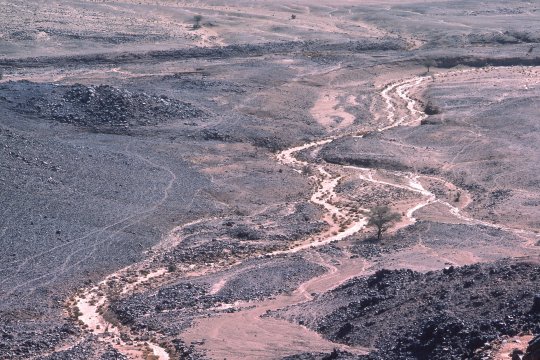 |
| .490. Originally everything moved by camel train, following traditional routes. This dry river channel across the Tassili-n-Ajjer was used by caravans traveling between Tripoli and Niger. |
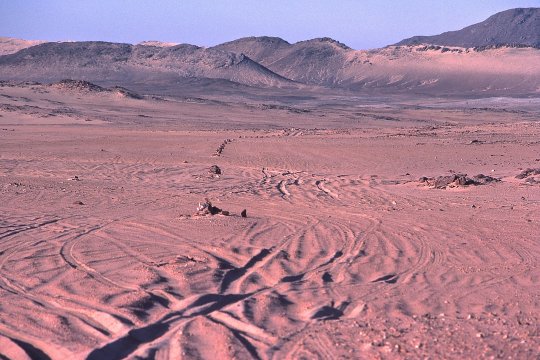 |
| .491. In seemingly featureless areas routes were often marked by piles of stones, so that travelers would not lose their way. (Approach to the Hoggar) |
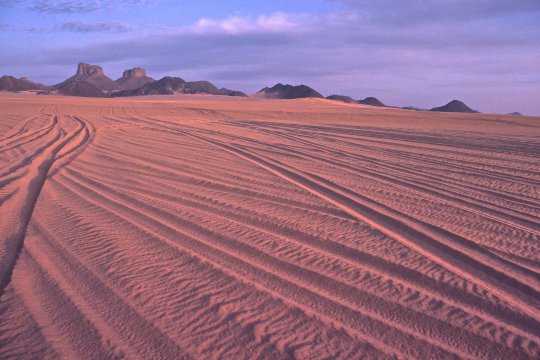 |
| .492. During the Second World War some of these tracks (pistes) were converted into routes negotiable by motor vehicles. (Crossing the Erg d’Admer near Djanet) |
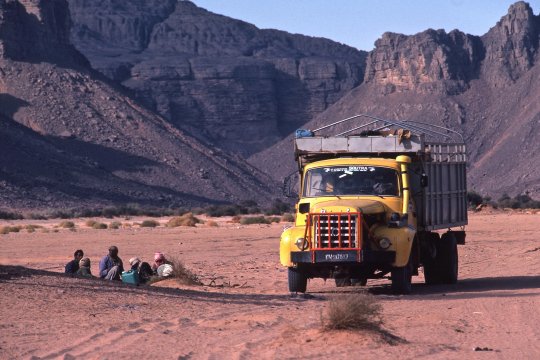 |
| .493. However, as camel caravans were progressively replaced by trucks, such tracks became badly worn and impassable at times. (Firmer ground near Arak) |
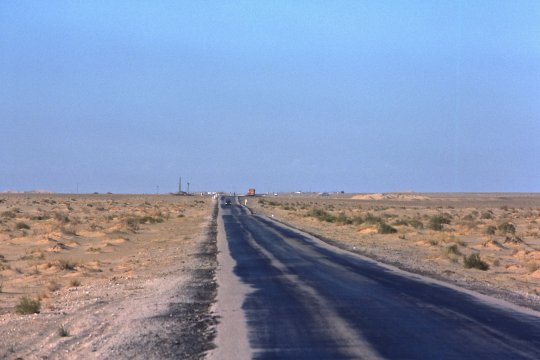 |
| .494. Later, with the need to move heavy drilling equipment around, several of the old pistes were tarred in the 1950s and made into proper roads. (Near In Amenas) |
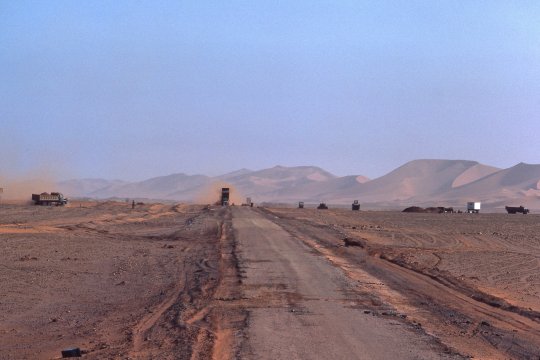 |
| .495. Unfortunately, having been laid rather hurriedly over sand, the road surface breaks up readily and is in constant need of repair. (Near In Amenas) |
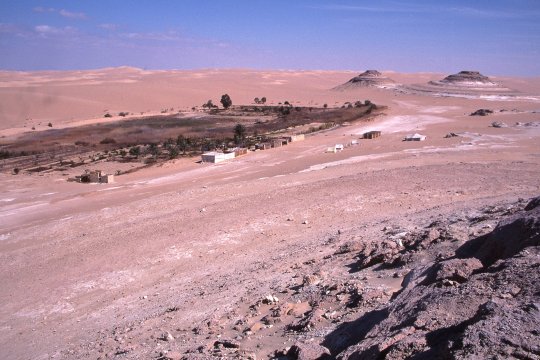 |
| .500. Their death-defying drivers race across the dunes on their way to this hot spring at Bir Wahed. |
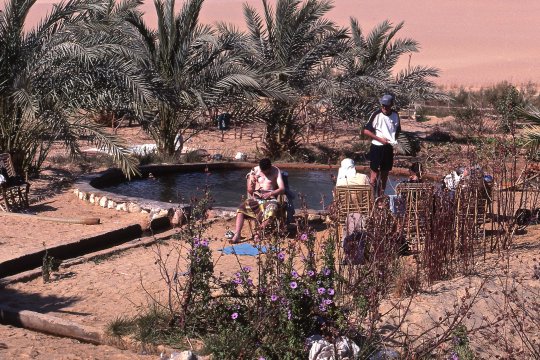 |
| .501. Here visitors take it in turns to bathe in sulfurous water, which bubbles upwards from deep underground. |
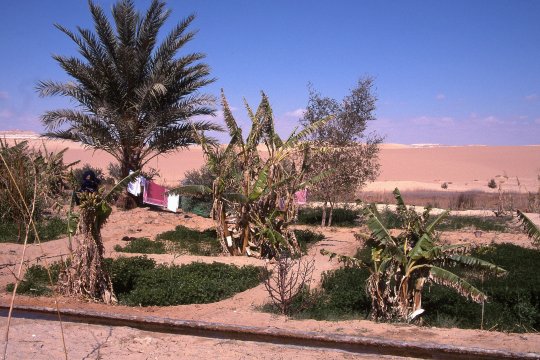 |
| .502. The run-off from the pool is used to irrigate a small garden, and serve tea to visitors, who will later return to their hotels in town. |
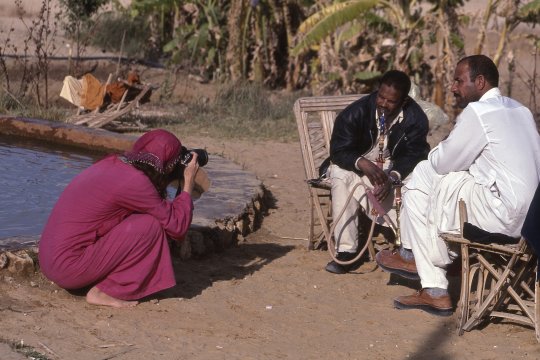 |
| .503. Not all the visitors are “backpackers” from Europe and America, booked on exotic tours. The increased prosperity of Saharan nations is reflected in regional tourism also. (Bir Wahed) |
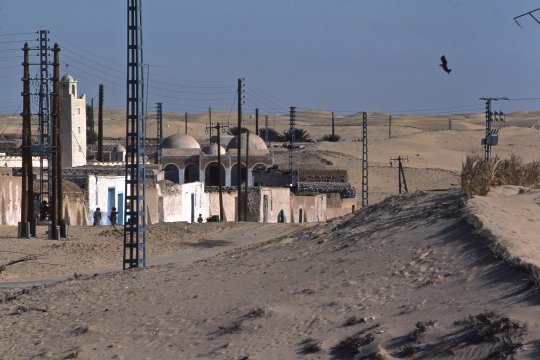 |
| .505. But oil revenues have also financed the provision of electricity to remote settlements, and changed people’s lives accordingly. (Village near Touggourt) |
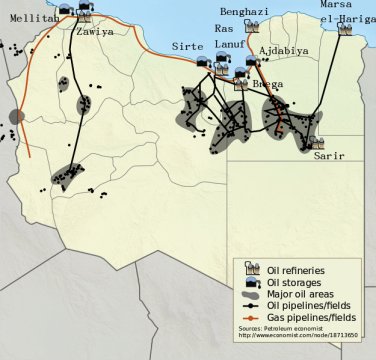 |
| .506. In addition the production of oil has led to the development of a range of petrochemical industries, both within and on the margins of the desert ... in Libya as well as Algeria. (Map of Libyan oil fields courtesy Danmichaelo at Wikipedia) |
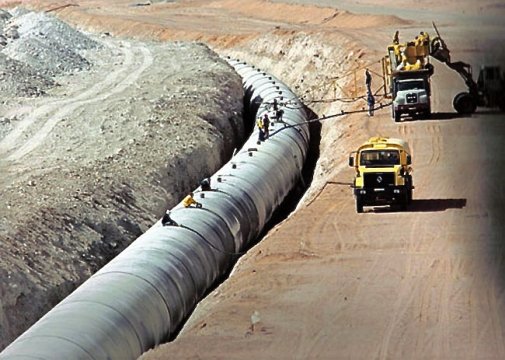 |
| .507. Revenues from oil have also underwritten a number of irrigation projects which would otherwise have been considered impractical. With drilling equipment on hand it was possible to tap into artesian reservoirs, and the income from oil exports financed the building of immense pipelines. (Glocker.com) |
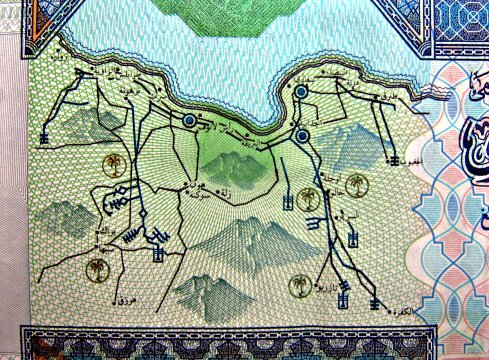 |
| .508. These were designed to move vast quantities of water to irrigate more land and meet the needs of expanding urban areas where enormous quantities of water were needed for drinking and sanitation, and to maintain parks and gardens. The planned network was celebrated on the Libyan 20 dinar bank note, but such projects are problematic since they draw tremendous volumes from subsurface reservoirs that are not being replenished. (Courtesy Victor Korniyenko at Wikipedia) |
![]()
Text and photos by John Tyman
unless otherwise indicated.
Intended for Educational Use
Only.
Contact Dr. John Tyman at johntyman2@gmail.com
for more information regarding
licensing.
![]()
www.hillmanweb.com
Photo processing, Web page layout,
formatting and hosting by
William
Hillman ~ Brandon, Manitoba ~ Canada